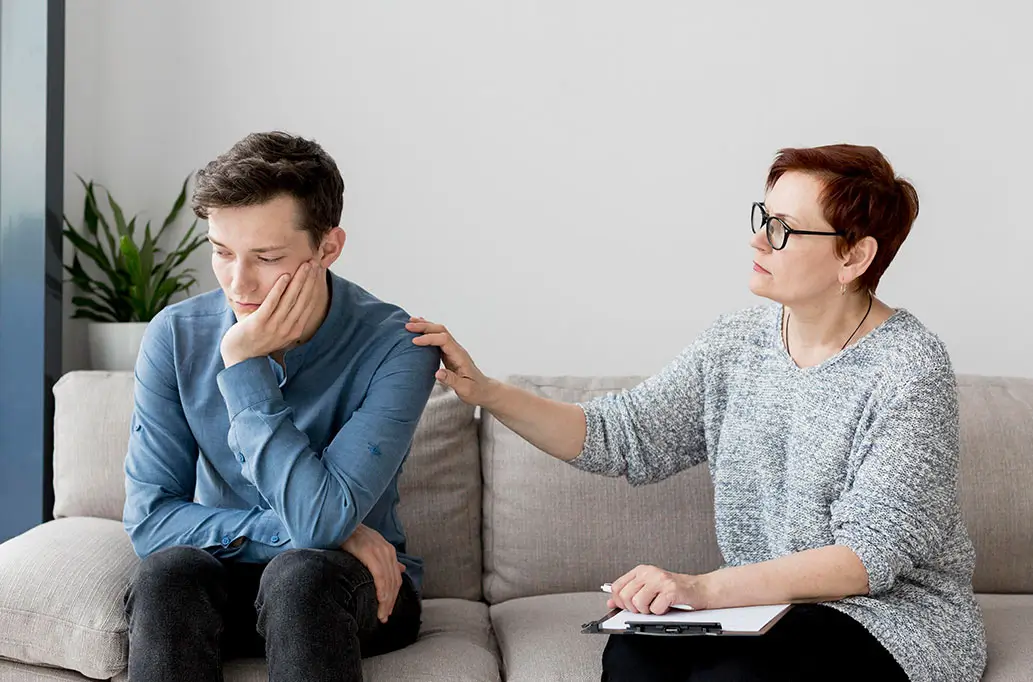Equine therapy, an increasingly popular form of therapy, harnesses the unique bond between humans and horses to promote emotional and physical well-being. This therapeutic approach has gained recognition for its effectiveness in addressing a wide range of issues. In this blog, we’ll delve into the world of equine therapy, focusing on its ability to provide both emotional and physical benefits for individuals.
What is Equine Therapy?
Equine therapy, also known as horse therapy or horse-assisted therapy, is a form of experiential therapy that involves interactions between individuals and horses under the guidance of a trained therapist or facilitator. It differs from simply riding horses in that the focus is on using the horse as a tool for achieving therapeutic goals rather than solely for recreational or competitive purposes.
In equine therapy sessions, horses are utilized in various ways to promote physical, emotional, and psychological well-being. This includes:
- Groundwork Activities: Participants engage in activities such as grooming, leading the horse with a halter, or navigating obstacle courses. These exercises promote trust-building, communication skills, and problem-solving abilities.
- Sensory Integration: The rhythmic and repetitive movement of the horse can provide a unique sensory experience, improving balance, coordination, and body awareness (proprioception).
- Emotional Expression: The calm and nonjudgmental nature of horses creates a safe environment for individuals to express their emotions freely, whether through verbal communication or nonverbal cues.
Overall, equine therapy aims to foster personal growth, enhance self-awareness, and empower individuals to overcome challenges through the therapeutic bond formed with the horse.
Emotional Benefits of Equine Therapy
- Stress Reduction and Improved Mood: Spending time with horses can lower stress hormones and promote feelings of relaxation and happiness.
- Increased Self-Esteem and Confidence: Caring for and connecting with these gentle giants fosters a sense of accomplishment and boosts self-worth.
- Improved Social Skills and Communication: Working with horses encourages communication and social interaction in a supportive environment.
- Emotional Expression and Regulation: Horses provide a non-judgmental presence, allowing individuals to express and manage emotions healthily.
- Reduced Anxiety and Depression: Equine therapy shows promise in alleviating symptoms of anxiety and depression.
Physical Benefits of Equine Therapy
- Improved Balance and Coordination: Groundwork activities and the horse’s movement naturally challenge participants, improving balance and coordination skills.
- Strength and Motor Skills Development: Exercises tailored to each individual can help build muscle strength and enhance motor skills.
- Pain Management: Studies suggest equine therapy may offer pain relief for individuals with chronic pain conditions.
- Sensory Integration: The horse’s movement and interaction provide sensory input, improving body awareness.
Mechanisms Behind the Benefits
The human-animal bond is a powerful force, and interaction with horses is no exception. Spending time with these gentle creatures can trigger positive physiological changes that contribute to both mental and physical well-being.
One key mechanism is the release of hormones like oxytocin during interaction with horses. Oxytocin, often referred to as the “love hormone,” plays a crucial role in promoting feelings of trust, connection, and social bonding. This hormonal response can contribute to reduced stress, improved mood, and a sense of calm, all of which contribute to the therapeutic benefits of equine therapy.
How to Get Started with Equine Therapy
The key to a successful equine therapy experience lies in choosing a reputable program with qualified professionals. Look for programs certified by organizations like the Professional Association of Therapeutic Horsemanship International (PATH Intl.). This ensures the program adheres to high standards and utilizes certified equine specialists and therapists.
Starting Your Program
- Initial Evaluation: Most programs begin with an assessment to understand your unique needs and goals. This helps the therapist create a personalized program for you.
- Program Selection: Based on your evaluation, the therapist will recommend a program tailored to your situation. Options might include individual sessions, group activities, or a combination of both.
Exploring Your Options
- Introductory Sessions: Many programs offer introductory sessions or tours. These allow you to meet the horses and therapists, ask questions, and gain a feel for the environment.
- Open Communication: Throughout the program, open communication with your therapist is crucial. Don’t hesitate to discuss any concerns or questions you may have to ensure a successful and rewarding experience.
By following these steps, you can confidently embark on your equine therapy journey and unlock the potential for healing and well-being.
Potential Challenges and Considerations
Equine therapy offers a unique path to well-being, but it’s natural to have some questions or concerns. Here’s a look at some common challenges and how to navigate them:
Cost Concerns:
- Sliding scale fees based on income
- Scholarships or grants
- Insurance coverage exploration
Accessibility:
- Remote sessions via telehealth
- Online therapy platforms
- Transportation assistance programs
Fear of Horses:
- Gradual acclimation through groundwork activities
- Trained therapists and handlers ensure safety
- Emphasis on the gentle nature of horses
The Future of Equine Therapy
Equine therapy continues to evolve, driven by ongoing research and advancements in technology, with the potential for broader applications across various needs.
Research Advancements:
- Studies exploring the neurobiological mechanisms behind equine-assisted interventions.
- Investigations into the efficacy of equine therapy for specific populations, such as veterans with PTSD or children with autism spectrum disorder.
- Longitudinal studies examining the lasting effects of equine therapy on mental health and well-being.
Technology Integration:
- Virtual reality simulations allowing individuals to experience equine therapy remotely.
- Wearable devices tracking physiological responses during equine-assisted sessions.
- Online platforms offering interactive educational resources and support networks for equine therapy participants.
Specialized Programs:
- Tailored equine therapy programs for diverse populations, including seniors, individuals with physical disabilities, and survivors of trauma.
- Integration of complementary modalities such as mindfulness-based practices and art therapy into equine-assisted interventions.
- Collaborations between equine therapy professionals and other healthcare providers to deliver holistic care and support.
As research continues to uncover the therapeutic potential of equine-assisted interventions and technology enables greater accessibility, the future of equine therapy holds promise for expanding its reach and impact on mental health and well-being.
Conclusion
Equine therapy offers a holistic approach to healing, harnessing the innate connection between humans and horses to promote emotional and physical well-being. From stress reduction and improved mood to enhanced balance and coordination, the benefits of equine therapy are vast and impactful. By fostering trust, communication, and self-awareness through interactions with these gentle creatures, individuals can unlock their potential for personal growth and healing.
As we’ve explored, equine therapy is not only about riding horses but also about building a therapeutic bond that transcends words. It’s about finding solace in the presence of these magnificent animals and discovering strength within ourselves that we may not have realized existed.
Don’t hesitate to reach out to Avisa. Your healing journey awaits the opportunity to connect with these gentle giants and discover the profound impact equine therapy can have on your life.
FAQs
Que: What are the benefits of horse therapy?
Ans: Horse therapy offers emotional benefits like stress reduction and improved mood, along with physical benefits such as better balance and coordination. It’s also effective for treating various mental health conditions and promotes personal growth through the therapeutic bond with the horse.
Que: What conditions does equine therapy treat?
Ans: Equine therapy treats anxiety disorders, depression, PTSD, autism, ADHD, substance abuse, trauma recovery, chronic pain, developmental disabilities, communication issues, and stress-related disorders.
Que: What are the downsides of equine therapy?
Ans: Cost, accessibility, fear of horses, and safety concerns are potential downsides. Sessions can be expensive, not everyone has access, some fear horses, and working with large animals carries risks.
Que: Is equine therapy good for trauma?
Ans: Yes, equine therapy helps trauma recovery by facilitating emotional processing, coping skills development, and trust rebuilding in a safe environment.
Que: Is equine therapy good for anxiety?
Ans: Yes, it reduces anxiety symptoms by promoting relaxation, improving mood, and providing a sense of connection and support through interaction with horses.
Que: Why is equine therapy not covered by insurance?
Ans: Insurance may not cover equine therapy due to limited research on its effectiveness, inconsistencies in certification standards, and higher costs associated with horse care and specialized training.










